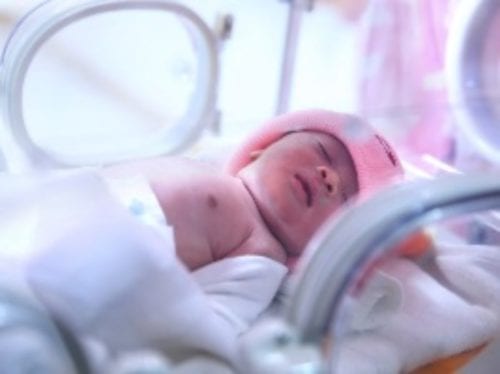In 2014, Personal Injury Partner, Iain Oliver from Ison Harrison, secured a financial settlement of £3,450,000 for his client, plus additional future payments for nursing care which amount to approximately £3,250,000.
Iain has 22 years experience with high value injury claims enabling him to successfully represent hundreds of accident victims, his diligence proving to be of enormous value to his clients.
Iain Oliver was originally instructed by the parents of X [the Claimant], from Leeds, to pursue a claim for clinical negligence which arose two days after her birth when she was administered excessive quantities of fluid. The Court determined in 2010 that Leeds Teaching Hospital NHS Trust were liable for causing X to develop cerebral palsy and medical reports were analysed to establish the value of her claim. Two weeks before the trial was due to take place, settlement was agreed and approved by Leeds High Court, ensuring her future is as secure and happy as possible given the circumstances. Her family is in the process of buying a plot of land on which to construct a purpose built home which will incorporate features recommended by her medical experts including a hydrotherapy pool and physiotherapy facilities.
The Detail
X was born by caesarean section at 28 weeks following abnormalities in her mother’s labour. She was generally well, but due to her prematurity, required ventilator and medical support in the Special Care Baby Unit. Unfortunately, at some point prior to 18:00 hours on 27th September 2003 a large and acute bolus of intravenous fluid based on 10% Dextrose was accidentally administered to the Claimant by the nursing staff.
As a result, the Claimant became acutely unwell, her abdomen became distended, her circulation began to collapse, and she became acutely acidotic. She then suffered a bradycardia (collapse of the heart rate) and shock and required ventilation and cardiac massage. Unrecordably high blood sugar and sodium levels were noted, and X ray showed that the left lung was a “whiteout.” At 06:00 the next day a cranial ultrasound showed a significant bilateral intraventricular haemorrhage (IVH) in the Claimant’s brain, with dilated ventricles. Thereafter the Claimant developed hydrocephalus with a rapid increase in head size. The hydrocephalus and raised intra-cranial pressure persisted, and on 10th January 2004 the Claimant underwent operative insertion of a ventriculo peritoneal shunt to alleviate intra cranial pressure. The distension of the right lateral ventricle by the intraventricular blood clot caused periventricular haemorrhagic venous infarction, which in turn caused extensiv
e right periventricular white matter damage (PVL) in the brain substance, and hemiatropy.
The effect of the damage to the Claimant’s brain is to render her severely disabled, with impairments of both gross and fine motor movements, and substantial cognitive impairment leading to problems with understanding, language and communication. She has a left hemiplegic cerebral palsy, with markedly increased tone on the left. She is unable to walk unaided. She is visually impaired. She requires assistance with all aspects of self care. She is difficult and slow to feed. For many years she did not sleep well, and required care through the night. She is doubly incontinent. There are behavioural difficulties. She has required enormous amounts of additional parental care and support. The Defendants admitted breach of duty, and that these consequences were consequent upon the admitted breach of duty, but contended that “even with appropriate care the Claimant would, as a result of her prematurity, have suffered from some long-term relatively subtle impairments of functioning
.”). It was upon this basis that resolution of the issues of liability and causation were compromised at 97% of the full value of the claim, which was subsequently approved by the Court.
After liability had been resolved the parties adopted a largely collaborative approach to obtaining evidence regarding X’s needs and reports were obtained from:
An orthopaedic surgeon – who confirmed that X will never walk properly without a walking frame and may not even be able to assist with transfers to and from a wheelchair after her mid 20s, and that X’s scoliosis (spinal twisting and curvature) is a consequence of her original injuries.
- A care specialist – who assessed X’s care needs in the past and for the rest of her life.
- An Occupational Therapist
- An Assistive Technology expert
- An educational psychologist
- An paediatric ophthalmologist
- A physiotherapist
- A Speech & Language Therapist (SALT)
- A paediatrician
- The Current Situation
As a result, according to our neuropsychologist, X’s quality of life has been transformed and she is making a great deal of progress generally, and at school. It had not been expected that she would actually achieve development goals such as an awareness of time, albeit much delayed.
She is now making friends at school where she was once quite isolated; and can “walk” quite long distances with a walking frame at school. X especially enjoys the hydro- and hippo-therapies and her once limited diet has been expanded by the patient approach of the SALT and her family. X is now just as talkative as ever but it is clear that she is interested in what others have to say and not merely parroting phrases.
X’s affairs are now administered by a Court of Protection Deputy whom we appointed for her and who adopts a pragmatic approach to securing what his charge needs.
Lawyer Iain Oliver said: “I hope that this gives a good insight into what a good legal and medico-legal team can achieve for a client like X who is, and sadly will always be, a very disabled child. This is over and above the therapies and assistance that are available through the State. I would also add that in this case the Defendant’s cooperation was very refreshing, especially once the issue of liability had been resolved.”
If you need to make a clinical negligence claim, please call us on 0113 284 5000 today.

















